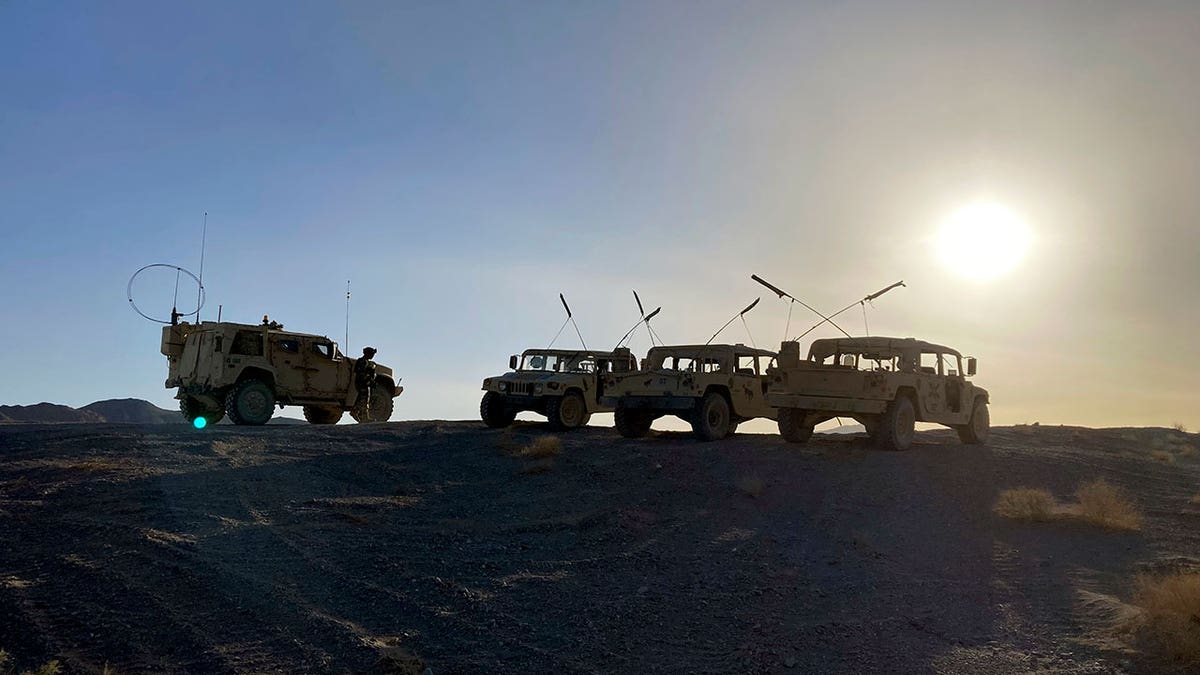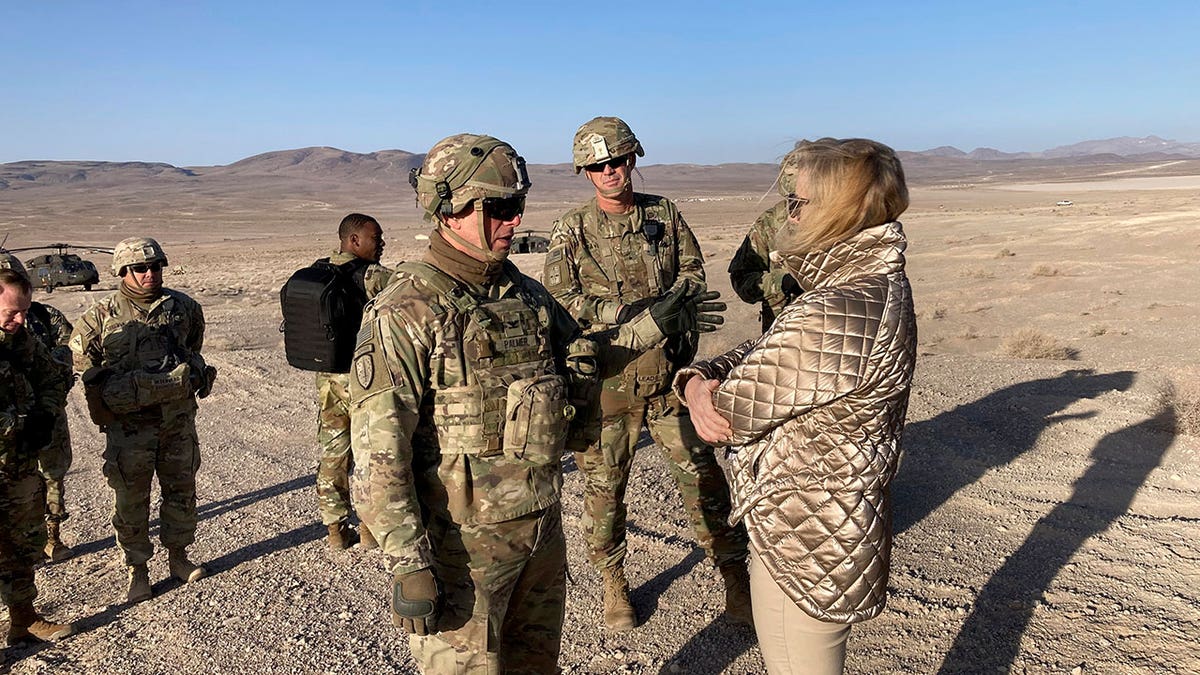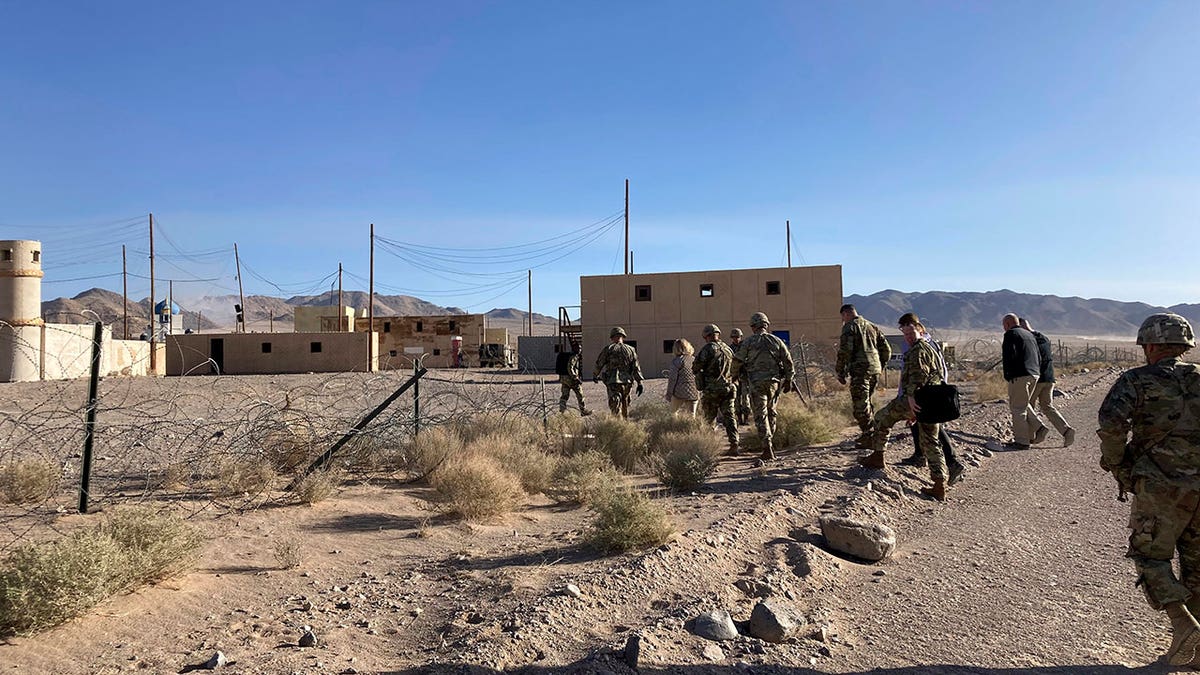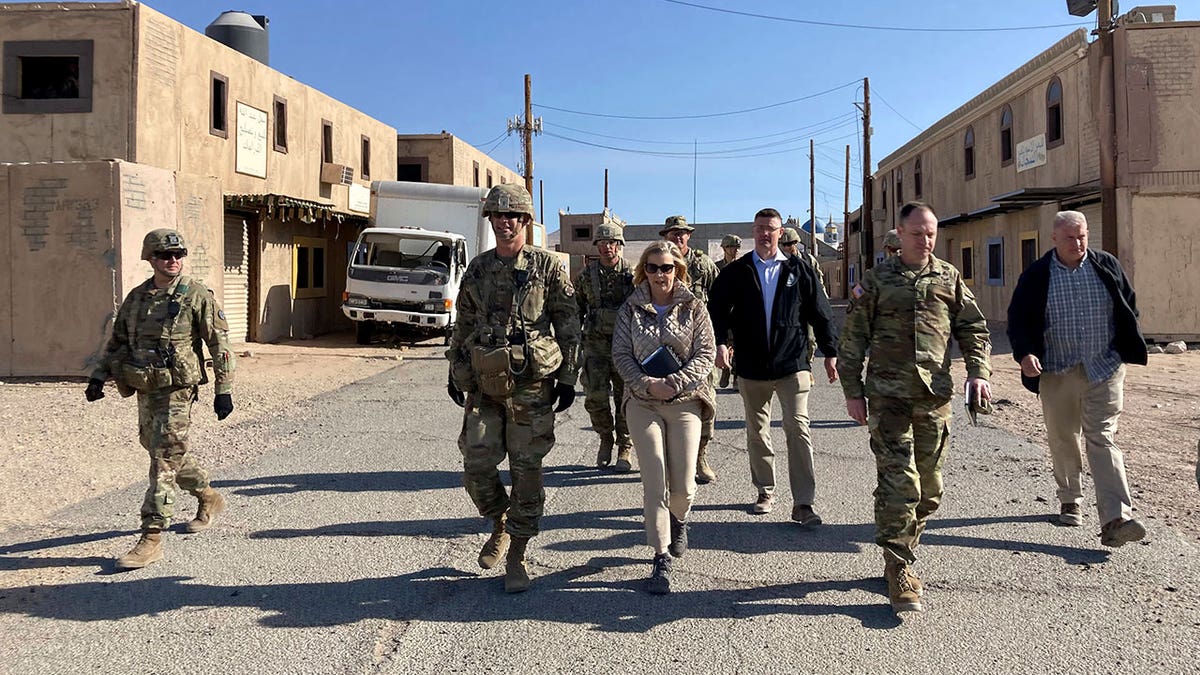Fox News Flash top headlines for April 16
Fox News Flash top headlines are here. Check out what's clicking on Foxnews.com.
In the dusty California desert, U.S. Army trainers are already using lessons learned from Russia’s war against Ukraine as they prepare soldiers for future fights against a major adversary such as Russia or China.
The role-players in this month’s exercise at the National Training Center speak Russian. The enemy force that controls the fictional town of Ujen is using a steady stream of social media posts to make false accusations against the American brigade preparing to attack.
In the coming weeks, the planned training scenario for the next brigade coming in will focus on how to battle an enemy willing to destroy a city with rocket and missile fire in order to conquer it.
AS RUSSIA SETS SIGHTS ON SEAPORT ODESA, WE SHOULD 'BE DONE UNDERESTIMATING UKRAINIANS': GEN. KEANE
If the images seem familiar, they are, playing out on televisions and websites worldwide right now as Russian forces pound Ukrainian cities with airstrikes, killing scores of civilians. The information war on social media has showcased impassioned nightly speeches by Ukraine’s president, Volodymyr Zelenskyy, as well as Russian efforts to accuse Ukraine’s forces of faking mass killings in towns such as Bucha – massacres that the West blames on Moscow’s troops.
"I think right now the whole Army is really looking at what’s happening in Ukraine and trying to learn lessons," said Army Secretary Christine Wormuth. Those lessons, she said, range from Russia’s equipment and logistics troubles to communications and use of the internet.

Soldiers from the 2nd Brigade, 1st Cavalry Division, prepare an attack during an early morning training exercise at the National Training Center at Fort Irwin, California, April 12, 2022. (AP Photo/Lolita C. Baldor)
"The Russia-Ukraine experience is a very powerful illustration for our Army of how important the information domain is going to be," said Wormuth, who spent two days at the training center in the Mojave Desert watching an Army brigade wage war against the fictional "Denovian" forces.
"We’ve been talking about that for about five years. But really seeing it and seeing the way Zelenskyy has been incredibly powerful. ... This is a world war that the actual world can see and watch in real time. "
PUTIN IS 'LOSING THIS CAMPAIGN': NAVY EXPERTS TELLS FOX NEWS' ARTHEL NEVILLE
At the center, the commander, Brig. Gen. Curt Taylor, and his staff have ripped pages out of the Russian playbook to ensure that U.S. soldiers are ready to fight and win against a sophisticated near-peer enemy.
It’s a common tool. For example, his base and the Joint Readiness Training Center in Louisiana both shifted to counterinsurgency training during the Iraq and Afghanistan wars. And the military services have focused other training on how to fight in cold weather – mimicking conditions in Russia or North Korea. But these latest changes have happened quickly in the early months after Russia invaded Ukraine.
BIDEN ADMINISTRATION AUTHORIZES ADDITIONAL $800 MILLION IN WEAPONS, SECURITY ASSISTANCE TO UKRAINE
About 4,500 soldiers from 2nd Brigade, 1st Cavalry Division, based at Fort Hood, Texas, are out in the vast desert training area at Fort Irwin, where they will spend two weeks fighting the NTC’s resident 11th Armored Cavalry Regiment, which acts as the enemy military. Soldiers from the regiment – known as Blackhorse – are arrayed in and around Ujen, which also includes role-players acting as the locals.

Army Secretary Christine Wormuth, right, talks with Army Col. Ian Palmer, commander of the 2nd Brigade, 1st Cavalry Division, at the National Training Center at Fort Irwin, California, April 12, 2022. (AP Photo/Lolita C. Baldor)
As the sun was rising earlier this past week, Army Col. Ian Palmer, the brigade commander, stood on Crash Hill, on the outskirts of the town, preparing his soldiers to launch an attack. Lines of tanks spread out in the distance. Heavy winds the night before hampered his progress, so the attack was a bit behind.
He said the exercise is using more drones by the friendly and enemy forces, both for surveillance and attacks. So his forces are trying to use camouflage and tuck into the terrain to stay out of sight. "You know if you can be seen, you can be shot, wherever you are," he said.
JAPAN, US HOLD NAVAL DRILLS OFF KOREAS AMID NUKE TEST WORRY
Down in the makeshift town, the opposition forces are confident they can hold off Palmer’s brigade despite the size difference. The Denovians only have about 1,350 forces, but they are throwing everything they have at the brigade, from jamming and other electronic warfare to insurgency attacks and propaganda.
The role-players have their phones ready to film and post quickly to social media.
The Denovian forces want to portray the unit in the worst possible light, said Taylor, and constantly twist the narrative on social media so Palmer’s troops realize they are in a battle for the truth.

Army Secretary Christine Wormuth is surrounded by soldiers at the National Training Center at Fort Irwin, California, April 12, 2022. (AP Photo/Lolita C. Baldor)
That’s a challenge, he said, because "when I’ve got a bunch of casualties and I’m getting overrun on my left flank and my supply trains aren’t where they need to be and I can’t find the bulldozers, it’s hard to think about something that someone said about me on Twitter."
The training goal, said Taylor, is teaching how to fuse all elements of combat power into a coordinated assault.
US NAVY INTENDS TO DECOMMISSION SOME OF ITS NEWEST WARSHIPS
"Everyone can play an instrument, but it’s about making music – bringing it all together in a synchronized fashion. And what you saw today was the artillery was doing the artillery thing, the aviation was doing the aviation thing and the maneuver guys were doing the maneuver thing. But part of the delay in their assault on the town was they couldn’t synchronize those three," he said.
Again, they can look to Ukraine to see how Russia failed to do that in the early weeks of the war. U.S. leaders repeatedly noted that, in Russia’s initial multipronged assault in Ukraine, commanders consistently failed to provide the airstrikes and support their ground troops needed to move into key cities such as Kyiv.
US BOASTS SUCCESSFUL HYPERSONIC MISSILE TEST, AFTER RUSSIA USED SIMILAR WEAPON IN UKRAINE
That failure led to Russian troops bombing the cities from the outskirts, hitting hospitals, apartment buildings and other structures, and killing civilians.
So when the next brigade arrives at the training center, Taylor said it will face an enemy on board with doing just that.

Brig. Gen. Curt Taylor and Army Secretary Christine Wormuth observe exercises at the National Training Center at Fort Irwin, California, April 12, 2022. (AP Photo/Lolita C. Baldor)
"We will be very focused on how to fight against an adversary that is willing to destroy infrastructure because that’s how we think our adversaries will fight," Taylor said. "We’ve got to be prepared for urban combat where we have an adversary that is indiscriminately firing artillery."
Wormuth, the Army secretary, said seeing the training also underscored other lessons the U.S. is taking from the war in Ukraine.
"As we’re watching what’s happening to the Russians now, it’s informative for us to think about what is right, from a modernization standpoint," she said, noting that some U.S. tanks are very heavy and the terrain in Europe is muddier, not like the hard-packed sand of the desert.
CLICK HERE TO GET THE FOX NEWS APP
The Army, she said, has to determine "what’s the right balance between the mobility of a tank, the survivability of a tank and the lethality of a tank. If you want to make it more mobile, you make it lighter, but that makes it less survivable. And so you have to decide where you’re going to take risks."






















